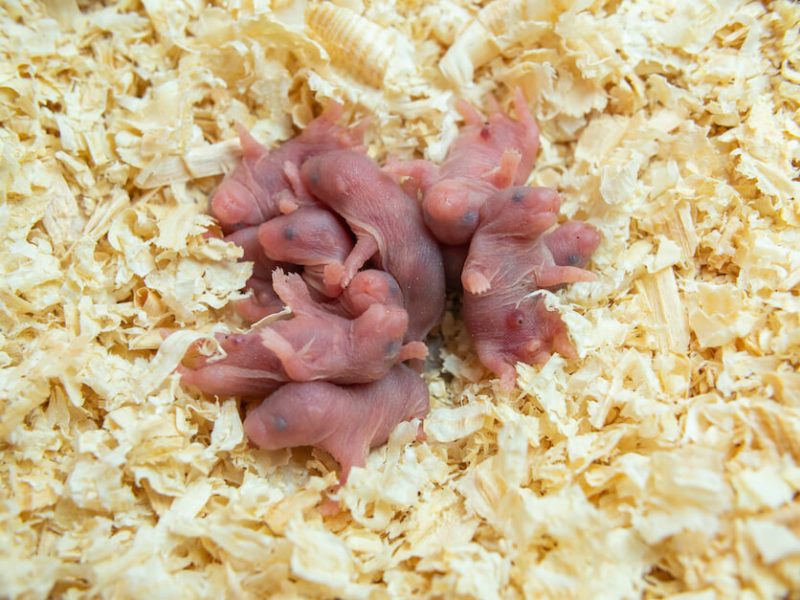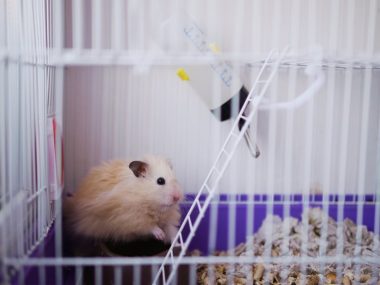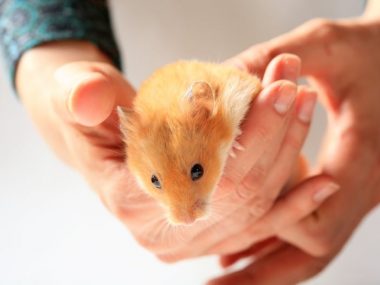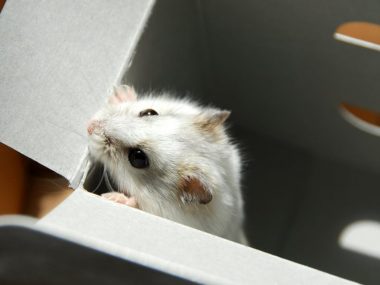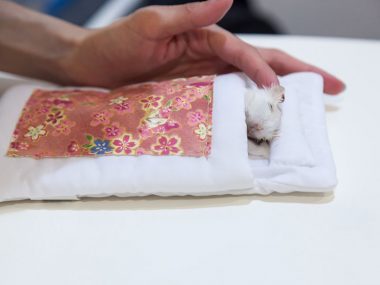Are you one of many hamster parents who wake up one morning to find baby hamsters snuggled together in the cage? Don’t panic; there’s a way to handle the arrival of new hammies. This thorough guide explains all the nitty-gritty.
Table of Contents
The Unexpected Arrival
So, you have a few little new ones in your hamster cage. Before you or your children reach into the cage to pick them up, STOP! Mom and babies need to be left alone, undisturbed in a quiet place.
You are probably scratching your head, wondering how on earth this happened. Odds are you have a male and a female in the same cage. Perhaps that pair of boys you have has one that’s a girl.
You now have babies to consider when caring for your hamsters. So, what do you do? Well, we are going to walk you through what you need to know to be a great hamster grandparent!
How Do You Take Care Of Baby Hamsters?
The most important thing to do right now is to maintain a peaceful, quiet environment for mom and her new babies. This may require relocating the cage to a quiet room away from children, pets, and noise.
The daddy hamster should be removed from the cage and placed into his own cage until the babies are weaned. Sometimes the mother can become cranky, and fights may break out between mom and dad.
The First 1 ½ Weeks
Mama hamster is hypervigilant when it comes to protecting her young while also trying to cope with caring for several little ones and herself. Once you have the cage in a quiet area, cover it with a sheet or lightweight cloth. This added bit of privacy helps to make her feel more secure.
For the first week and a half, you’ll need to limit any interaction with feeding and watering. As tempting as it may be to do your weekly cage cleaning, it’s best to leave it be and spot clean only if necessary.
If you happen to find that some of the pups are missing during this time, it’s most likely because the mother ate them. Female hamsters who have given birth instinctively downsize (by culling) their litter to the number of pups she is able to handle. If by chance, any of the pups are born sick or deformed, the mother instinctively eats them as well.
Check out an earlier article further explaining why hamsters eat their babies to better understand this somewhat odd behavior. So, should I remove a dead baby hamster if I find one? If you happen to find a dead baby in the cage and it is outside the clutches of the mother’s immediate area, carefully use a spoon to reach in and scoop it up.
Things To Know About Baby Hamsters
Before the babies reach the weaning stage, it helps to know what to expect, so we are going to have a mini crash course on baby hamsters.
Baby hamsters are called “pups”. Different hamster breeds give birth to a different number of pups:
- Syrian hamsters typically give birth to 5-10 pups. Syrian pups (such as baby teddy bear hamsters) can weigh about 0.070 – 0.10 ounces (about the size of 2-3 jellybeans.)
- Dwarf hamsters only have about 4-6 pups. Dwarf hamster pups (such as baby Roborovski hamsters) weigh about 0.035 – 0.070 ounces (about the size of 1-2 jellybeans.) As you can see, they are very tiny.
They will grow very fast, so be prepared. When they are born, they are hairless. Their eyes and ears are closed shut.
Growth Timeline
Days 1-7
- The teeth start to erupt through the gums.
- The fur begins to grow.
Day 10
- The pups are able to start with moist solid food.
Days 10-14
- The pups begin to start moving around. They can easily squeeze through wire cage bars, so you may need to pup-proof the bottom half of the cage to prevent this from happening. You can use cardboard panels taped around the cage to keep them in. Remember that whatever you use, they (and Mama hamster) may chew on it.
Days 17-18
- Their ears open up
- Begin to monitor the mother for any aggressiveness towards the pups. If she happens to exhibit this behavior, you may need to prematurely separate the pups from her.
Days 21-28
- It’s time to separate the pups from their mother. Female pups should go into a cage separate from the male pups.
- You can begin handling the pups and getting them socialized.
Note for Dwarf Hamsters: mating between the parent hamsters will most likely occur as soon as the pups are removed, so unless you want more babies on the near horizon, you may want to separate them. (This does not apply to Syrian hamsters since they are solitary and are not kept in pairs).
Can Baby Hamsters Survive Without Their Mother?
Caring for a rejected or orphaned baby hamster is very challenging. If this occurs, be prepared that the pup may not survive. The survival rate of an orphaned hamster is very low. There are a few things you can do to try and care for it.
- Create a small, warm nest out of the shredded toilet/facial tissue paper. Place this nest on a heating pad set on low. Both the heating pad and nest will need to be inside of a box. Place the pup inside of this next and cover it with some of the tissue.
- Contact your veterinarian or a wildlife rehab facility immediately to obtain a milk replacement for the mother’s milk and a bottle/dropper to feed it through.
Many online sites recommend using Lactol as a milk replacement for orphaned hamsters. However, the nutrients in this replacement milk are not designed for rodents. Lactol has twice the amount of fat that a hamster requires. It does not contain the necessary proteins the hamster needs to survive.
Separation Time
The mother typically handles weaning the pups from nursing to eating solid food, so there’s not much for you to do other than move the pups to a new cage by Day 28. Females should go into one cage while males go into another.
So, how do you sex the pups? Actually, it’s not too hard to do this. Hold the pup upside down to expose its underside.
- Females: will have two openings close together
- Males: two openings (one being the penis, the other is the anus) have a space between them
A pup becomes an adult hamster at five weeks. This is why it’s essential to separate males from females because they may mate, leading to many more hamster babies!
Finding Homes For The Babies
Most hamster “grandparents” opt to find new homes for the babies rather than keeping them. It’s important that you find a good loving home with a family that will love and nurture them. None of us wants to see a hamster abused or mistreated.
If you cannot find homes for them, you can contact hamster rescue groups near you to take them. It’s never recommended to place ads online, sell them to pet shops or children. Releasing them out into the wild is dangerous and may have a very unfortunate outcome.
Do Baby Hamsters Bite?
Until a hamster is familiar with being handled and is tame, it can bite (including babies.) Baby hamsters are fearful, and an approaching hand becomes an easy target for them to bite. Anytime a hamster (regardless of age) feels threatened or afraid, the odds of it biting are high.
Something to keep in mind when it relates to biting is not only can baby hamsters bite, but the mother may do so also to protect her pups.
When Do Baby Hamsters Open Their Eyes?
Their little eyes begin to open anywhere between 14-17 days. Although their eyes may be open, they cannot see well. Hamsters have poor vision. According to Trends in Neurosciences, their vision is 20/2000 (“What can mice tell us about how vision works?”). No matter if a hamster is a baby or an adult, it’s going to have extreme nearsightedness.
When Can I Touch Baby Hamsters?
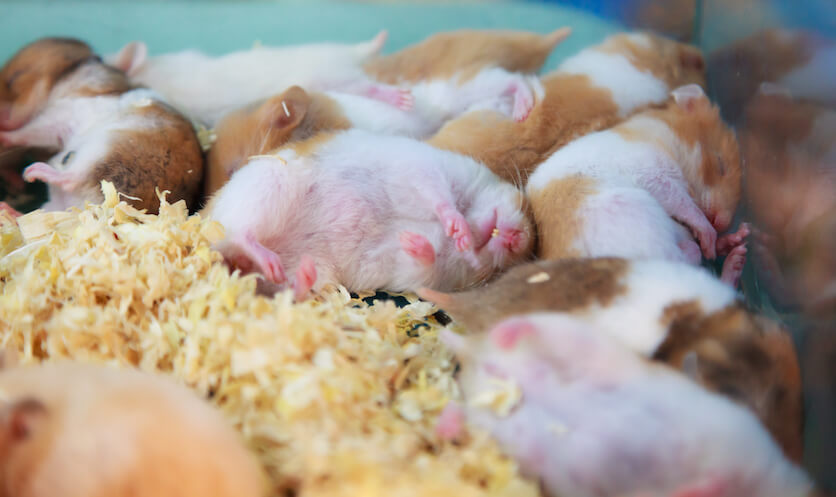
Scent (to a hamster) is the same as our eyesight. We rely on that which we see. A mother hamster relies on her sense of smell that tells her those are her babies. When one of her pups develops a new scent (from you touching it) that tells her something’s not right, and she rejects it. So, it’s not safe to touch or hold a pup until it is separated from the mother.
What Do Baby Hamsters Eat?
From birth until about day 10-14, the pups survive on their mother’s milk through nursing. The mother naturally weans them from nursing to solid foods. Moist, solid foods can be fed to the pup when weaning begins. By the time you separate the pups from their mother, they should be on a solid pellet diet. Read more about what hamsters can and cannot eat.
Bundles Of Uber Cuteness
Those really cute baby hamsters are super hard to resist picking up and holding those first few weeks. By resisting the urge to reach your hand into the cage, you not only save its life, but the trust between you and their Mama remains intact. Baby hamster care isn’t as intimidating if you know what to expect.
